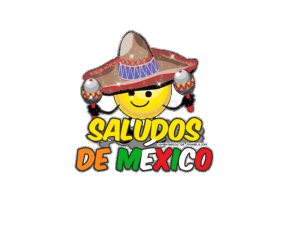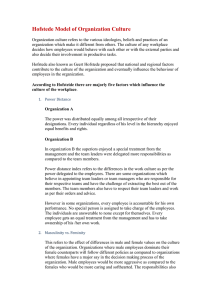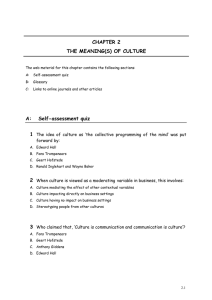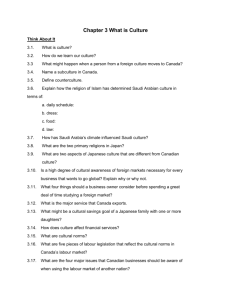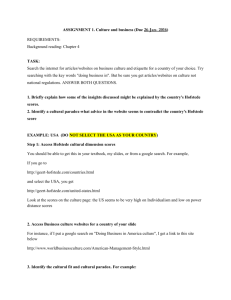CULTURE
advertisement
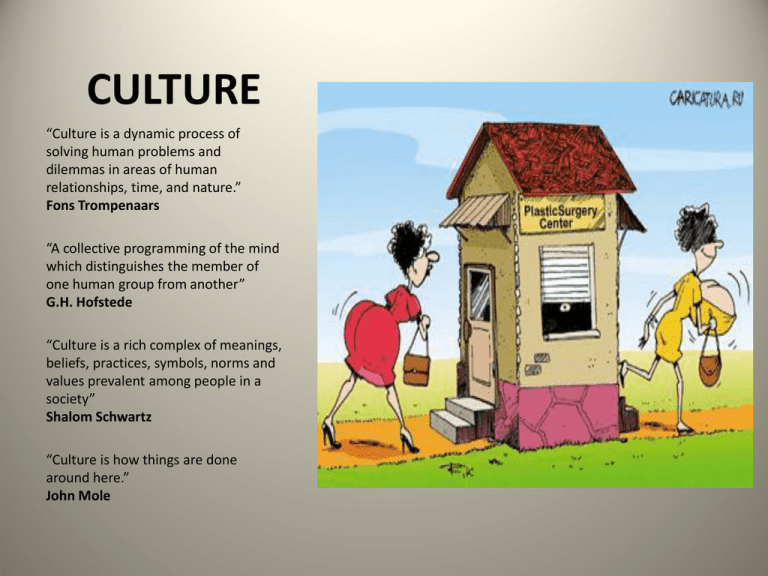
CULTURE “Culture is a dynamic process of solving human problems and dilemmas in areas of human relationships, time, and nature.” Fons Trompenaars “A collective programming of the mind which distinguishes the member of one human group from another” G.H. Hofstede “Culture is a rich complex of meanings, beliefs, practices, symbols, norms and values prevalent among people in a society” Shalom Schwartz “Culture is how things are done around here.” John Mole Edward T. Hall was an anthropologist who made early discoveries of key cultural factors. In particular he is known for his high and low context cultural factors. High context In a high-context culture, there are many contextual elements that help people to understand the rules. As a result, much is taken for granted. This can be very confusing for person who does not understand the 'unwritten rules' of the culture. Low context In a low-context culture, very little is taken for granted. Whilst this means that more explanation is needed, it also means there is less chance of misunderstanding particularly when visitors are present. Openness of messages Many covert and implicit messages, with use of metaphor and reading between the lines. Many overt and explicit messages that are simple and clear. Use of non-verbal communication Much nonverbal communication and body language. More focus on verbal communication Cohesion and group significance Strong distinction between ingroup and outgroup. Strong sense on family Flexible and open grouping patterns, changes when needed. Relationship vs task Relationship more important than task amigo. Task more important. Conception of time Open, flexible, present oriented, process more important that product. POLYCHRONIC Linear time, well organized, product more important than process. MONOCHRONIC TIME EDWARD T. HALL Open, flexible, present oriented, process more important that product. POLYCHRONIC Linear time, well organized, product more important than process. MONOCHRONIC FONS TROMPENAAR: Time as synchronisation events in parallel, synchronised together. Finds order in coordination of multiple factors. Time as sequence events as separate items, sequence one after the other. Order in actions that are one after the other. GEERT HOFSTEDE: Long- versus Short-term Orientation (LTO) focuses on to what extent the group invests for the future, is persevering, and is patient in waiting for results. GEER HOFSTEDE: Cultural dimensions (scale 1 to 100) Source: http://www.geert-hofstede.com/ Power Power Distance (PD or PDI). It is the extent to which less powerful members expect and accept unequal power distribution. High PD cultures usually have centralized, top-down control. Low power distance implies greater equality and empowerment. Self Individualism versus Collectivism (ID or IDV). In an individual environment the individual person and their rights are more important than groups that they may belong to. In a collective environment, people are born into strong extended family or tribal communities, and these loyalties are paramount. Gender Masculinity versus Femininity (MAS). It focuses on the degree to which “traditional” gender roles are assigned in a culture; i.e., men are considered aggressive and competitive, while women are expected to be more gentle and be concerned with home and family. Predictability Uncertainty Avoidance (UA or UAI). It defines the extent to which a culture values predictability. Society’s tolerance for uncertainty and ambiguity Time Long versus Short term Orientation (LTO) La publicidad • • • • • • • • Persuasión Informar Originalidad Novedad Constancia Frases publicitarias Herramientas Medios
